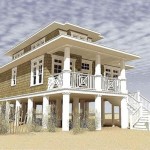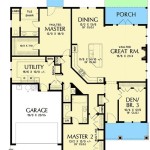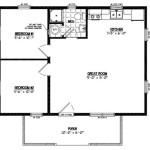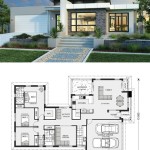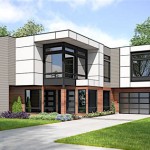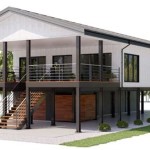Simple 4 Bedroom House Plan: Low Budget Options and Considerations
Designing a four-bedroom house plan on a low budget requires careful planning and prioritization. It's about making informed decisions that balance space, functionality, and cost-effectiveness. This entails a strategic approach to the layout, materials, and construction techniques, ensuring a comfortable living environment without exceeding financial constraints. The focus should be on practicality and efficiency, minimizing unnecessary features and maximizing the use of space.
The initial phase involves clearly defining needs and wants. Understanding the family’s lifestyle and future requirements is crucial. This helps in determining the essential features and the acceptable trade-offs. For instance, deciding between a large living room and a smaller dining area, or prioritizing a master ensuite over a larger guest bedroom, are decisions that significantly impact the final design and budget.
The overall dimensions of the house play a significant role in the total cost. A compact design, even with four bedrooms, can substantially reduce expenditure on materials and labor. A two-story design, for example, minimizes the footprint, thereby decreasing foundation and roofing costs compared to a sprawling single-story layout. However, the selection of a two-story design may increase the complexity of construction of a stairwell and create requirements for increased sound insulation.
The availability of cost-effective materials is also an important factor. Locally sourced materials often prove more economical than imported options. Exploring alternatives to traditional bricks and concrete blocks, such as stabilized rammed earth or prefabricated panels, can lead to substantial savings. Furthermore, incorporating recycled or reclaimed materials, where appropriate and in compliance with building regulations, can further reduce costs and promote environmental sustainability.
The design should also emphasize energy efficiency. Incorporating passive solar design principles, such as orienting the house to maximize sunlight exposure in winter and minimize it in summer, can reduce reliance on artificial heating and cooling. Using energy-efficient windows and insulation further contributes to long-term cost savings. These considerations should be integrated into the initial design phase to ensure they are seamlessly incorporated and maximize their effectiveness.
Optimizing the Floor Plan for Cost-Effectiveness
A well-optimized floor plan is paramount for achieving a four-bedroom house on a low budget. Open-plan living areas are generally more cost-effective than separate, smaller rooms. They reduce the need for internal walls, doors, and associated hardware, thereby saving on both materials and labor costs. Furthermore, open-plan designs often create a more spacious and airy feel, enhancing the perceived value of the home.
Strategic placement of service areas, such as bathrooms and the kitchen, can also lead to cost savings. Grouping these areas close together minimizes plumbing runs, reducing material and labor expenses. A centralized plumbing core simplifies installation and maintenance, contributing to long-term cost efficiency.
The size of the bedrooms should be carefully considered. While four bedrooms are a requirement, they do not necessarily need to be overly spacious. Compact but functional bedrooms can adequately serve their purpose without significantly increasing the overall size of the house. Thoughtful design of built-in storage solutions can maximize the use of available space and reduce the need for bulky, space-consuming furniture.
The design should be simple and straightforward, avoiding complex shapes and angles. Simple rectangular or square floor plans are generally more cost-effective to construct than irregular shapes. Complex designs require more intricate framing and finishing, increasing both material and labor costs. Additionally, simple designs are often easier to modify or expand in the future, providing greater flexibility.
It's also important to consider the flow of traffic within the house. A well-designed floor plan should minimize unnecessary corridors and circulation space. Efficient circulation reduces the overall square footage required, leading to cost savings without compromising functionality. The aim is to create a layout that is both functional and aesthetically pleasing, while remaining within the budgetary constraints.
Material Selection and Construction Techniques for Budget Control
The choice of building materials plays a crucial role in determining the overall cost of a house. Opting for locally sourced materials is often the most cost-effective option. Local materials minimize transportation costs and may also be better suited to the local climate, ensuring durability and longevity. Researching and comparing prices from different suppliers is essential to securing the best deals.
Simplifying the exterior finishes can also lead to significant savings. Avoiding elaborate cladding or decorative elements can reduce both material and labor costs. Choosing a simple, durable, and low-maintenance exterior finish is a practical approach to balancing cost and aesthetics. Consider materials like fiber cement siding, which offers a blend of affordability, durability, and visual appeal.
Interior finishes also present opportunities for cost savings. Avoiding expensive tiling or flooring throughout the house can substantially reduce expenditure. Consider using affordable alternatives such as vinyl flooring or polished concrete, which offer durability and aesthetic appeal at a lower price point. Painting the walls in neutral colors can also create a sense of spaciousness and avoid the need for expensive wallpaper or specialized finishes.
The choice of construction technique can also impact the budget. Using conventional framing methods is generally more cost-effective than more complex or specialized techniques. However, exploring alternative construction methods, such as prefabricated panels or container homes, may be a viable option in certain situations, potentially offering faster construction times and reduced labor costs. Proper planning and research are crucial before committing to any specific construction technique.
Employing cost-effective landscaping techniques can also enhance the overall appeal of the house without breaking the bank. Minimizing the amount of paving and opting for low-maintenance landscaping can reduce both initial installation costs and ongoing maintenance expenses. Incorporating native plants and drought-resistant species can further contribute to water conservation and reduce the need for extensive irrigation.
Prioritizing Essential Features and Deferred Upgrades
When building a four-bedroom house on a low budget, it's essential to prioritize essential features over non-essential ones. Focus on ensuring that the basic structural elements, such as the foundation, walls, and roof, are of high quality and built to code. These are the most critical components of the house and should not be compromised on in order to save money.
Identify features that can be deferred until later. For example, a luxurious master bathroom ensuite or a fully equipped home theater can be added at a later stage when finances allow. Focusing on the essential features during the initial construction phase ensures that the basic needs of the family are met without exceeding the budget. This approach also allows for future upgrades and customization as finances improve.
Consider the long-term cost implications of different features. Investing in energy-efficient appliances and fixtures may require a higher upfront cost, but it will result in significant savings on utility bills over the long term. Similarly, choosing durable and low-maintenance materials will reduce the need for repairs and replacements, saving money in the long run.
A phased approach to construction can also be beneficial. This involves completing the essential structural elements of the house first, followed by the interior finishes and landscaping in subsequent phases. This allows for a more manageable budget and provides flexibility to make adjustments as needed. Phased construction also allows the homeowner to live in the house while completing the remaining phases, potentially saving on rental costs.
Ultimately, building a four-bedroom house on a low budget requires a careful balance of needs, wants, and affordability. By prioritizing essential features, choosing cost-effective materials, optimizing the floor plan, and deferring non-essential upgrades, it is possible to create a comfortable and functional living space without exceeding financial constraints. Thorough planning, research, and a willingness to make informed compromises are key to success.

4 Bedroom House Plan In Village Bhk Home Plans Simple Low Budget

Budget Friendly 4 Bed House Plan 55150br Architectural Designs Plans

Cost Effective 4 Bedroom Modern Home In Low Budget Free Plan

Est House Plans To Build Simple With Style Blog Eplans Com

Low Budget Simple House Design Plans For Builders Blog Builderhouseplans Com

New 4 Bedroom House Plans In Kenya 0799 69 13

Cost Effective 4 Bedroom Modern Home In Low Budget Free Plan

Low Budget Simple House Design Plans For Builders Blog Builderhouseplans Com

Small And Affordable House Design 4 Bedroom Residence

4 Bedroom House Plans Autocad Simple Designs
Related Posts


